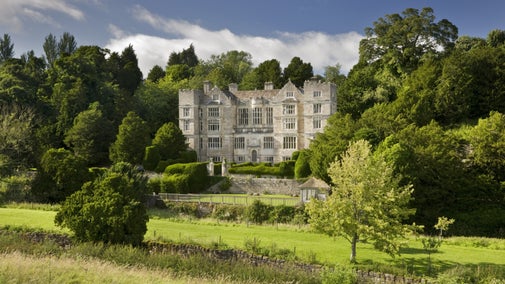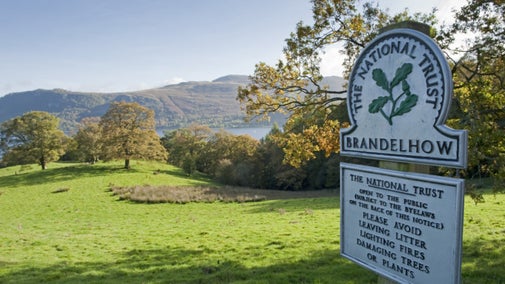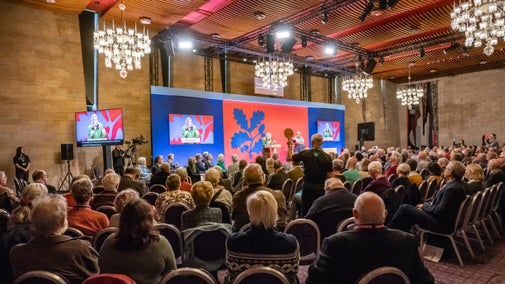
Ten things you might not know about the National Trust

Have you heard about our first celebrity supporter, or how we saved a rare butterfly from extinction? From our unusual founders to our red squirrel rangers, here are 10 curious facts about our past and present.
- We’re the brainchild of a social reformer, a priest and a lawyer
- Octavia Hill, Canon Hardwicke Rawnsley and Sir Robert Hunter believed in the importance of historic places and green spaces. In 1895, they came together and founded the National Trust to preserve them for everyone’s ‘enjoyment, refreshment and rest’. Those values are still at the heart of everything we do, from looking after your favourite sun-dappled woodlands to taking care of over 780 miles of coastline.
- We bought the first National Trust house for just £10
- We saved Alfriston Clergy House from being demolished in 1896 and restored it to its former glory. Today you can explore a little slice of history at this thatched, medieval meeting house in East Sussex, with views over the River Cuckmere.
- We look after places now and for ever
- When a place is donated to the National Trust, it’s in our care for everyone to enjoy for ever. Acts of Parliament have helped us make sure that forever means forever – private land and houses left to us by former owners can never be sold.
- Beatrix Potter was one of our biggest supporters
- The success of Peter Rabbit, Jemima Puddle-Duck and their friends helped Beatrix Potter to donate thousands of acres of countryside and 14 working farms to the National Trust. We also look after her 17th-century farmhouse, Hill Top in Cumbria, where you can step into the pages of her famous children’s books.
- We’re landlords for entire villages, pubs and a Regency playhouse
- Alongside the historic houses, mills, castles, gardens, archaeological remains, coastline, forests, woods and other wild spaces we look after, you might find a few surprises. These include 39 atmospheric pubs, the Theatre Royal in Bury St Edmunds and Chiddingstone, a Tudor village in Kent. We help them thrive too, as places for people to visit, live and work in.
- We’ve got enough members to fill a small country
- Over 6 million people (and counting) are National Trust members. That’s more than the entire population of Denmark. Membership gives free access to over 500 special places and helps us restore and protect them for the future.
- Our volunteers would pack out Lord's Cricket Ground
- We couldn’t do what we do without thousands of volunteers. From gardeners to guides, toad patrollers to costume designers, they donate their skills and passion – and millions of hours of their time each year.
- We’re a rare bat’s best friend
- We work to protect all kinds of endangered wildlife. You can find the barbastelle bat, and 17 other bat species, roosting in the buildings and woodland we look after. We’ve reintroduced the large blue butterfly – once extinct in the UK – and with the help of volunteer rangers, red squirrels are thriving in habitats such as Aira Force in the Lake District.
- We grow and serve 18th-century vegetables
- White icicle radishes and prickly cucumbers appear on the menu at Attingham Park’s Carriage House Café, fresh from the kitchen garden. It’s just one of the places where we conserve the natural and cultural heritage of the gardens and orchards in our care to give you a taste of seasonal, sustainable food.
- Our most popular attraction is a Regency mansion
- A total of 518,863 people visited Attingham Park in 2020/21, an 18th-century estate that's full of history. The mansion was built for the first Lord Berwick in 1785 and still stands today, thanks to volunteers, staff and supporters like you. The second-most visited place in 2020/21 was Cliveden with its colourful formal gardens.

You might also be interested in
About the National Trust today
Discover more about our legacy, people and values as a conservation charity. We protect historic places and green spaces while opening them up for everyone, for ever.

The history of the National Trust
Discover the history of the National Trust, from its foundation in the 19th century, through key projects, wartime and epidemics, to the modern day.

How we are run
Discover how the National Trust is run, how our governance arrangements are underpinned by Acts of Parliament and how they are designed to support and challenge our staff.
